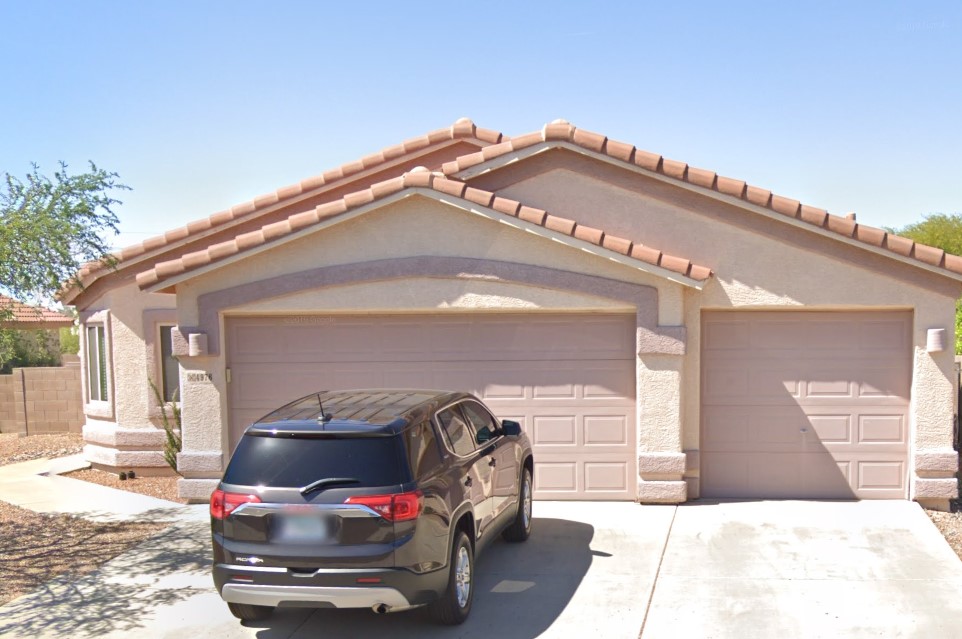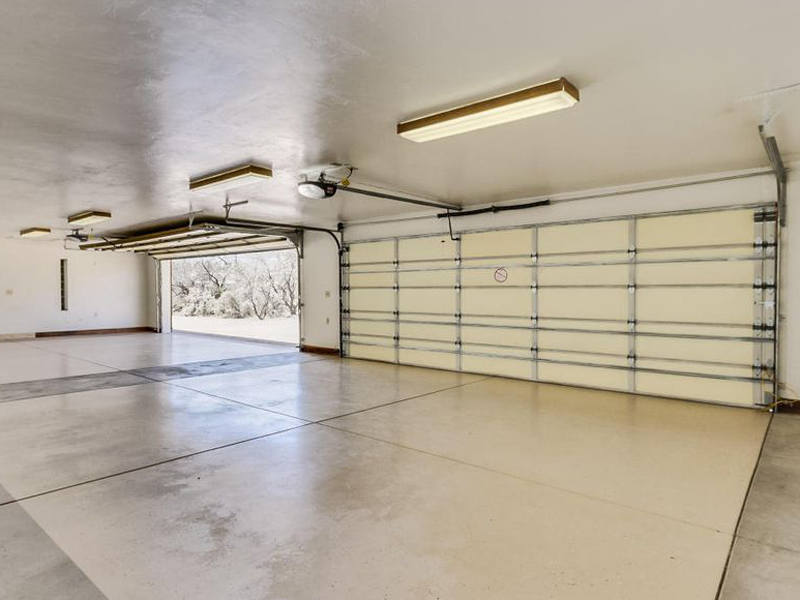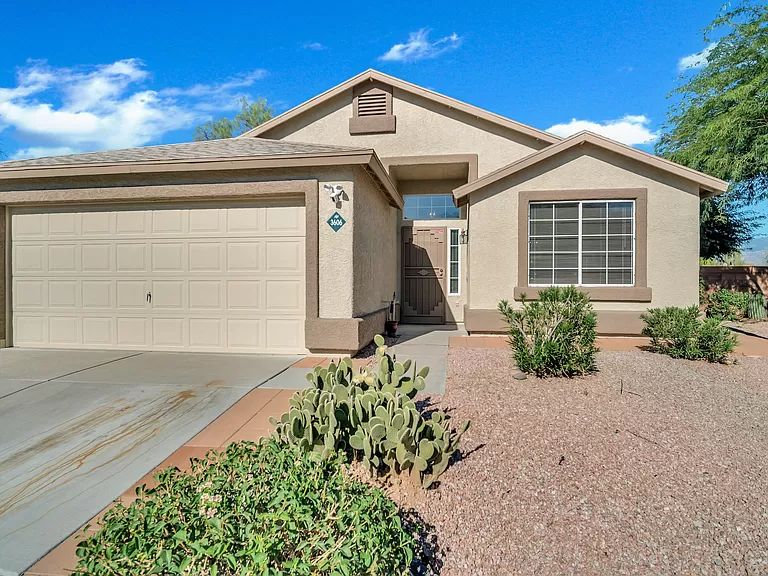Is Your Garage Door Stuck? Right here's What to Do First
When your garage door will not open up, start with these important safety checks prior to trying any repairs. Initially, make certain no person is standing near the door which cars are clear of the opening. Look for obvious indications of damage like damaged panels, curved tracks, or hanging cables. If you see a snapped springtime or seriously harmed components, stop promptly and call a professional—-- these fixings need customized devices and experience to deal with safely.

Inspect These 6 Things Before Calling a Professional
Before assuming you need pricey fixings, go through this quick analysis list that addresses most garage door issues:
-
Source of power: Confirm the opener is connected in and the electrical outlet is functioning
-
Remote batteries: Change dead batteries in your push-button control
-
Hands-on lock: Inspect if a person inadvertently engaged the hand-operated lock
-
Blockages: Search for particles obstructing the door's path or sensing units
-
Emergency launch: Make sure the red emergency situation cable hasn't been drawn
-
Breaker: Validate the garage circuit hasn't tripped
These straightforward checks resolve roughly 70% of garage door problems without requiring expert treatment.
10 Usual Factors Your Garage Door Won't Open
Recognizing why your garage door opener isn't working assists you choose the right remedy. Here are one of the most constant causes house owners encounter:
Dead remote batteries represent the most basic fix—-- when batteries die, the remote can not send out signals to the opener. Power outages or stumbled breakers cut electrical power to the motor. Broken springs avoid the door from lifting correctly and need prompt professional attention. Sensing unit misalignment causes safety and security systems to obstruct door procedure. Track blockages stop rollers from relocating smoothly. Electric motor overload triggers automatic shutoffs when the opener spots resistance. Limitation switch issues perplex the opener regarding door placement. Cord damages disrupts the lifting system. Weather-related problems impact door activity during extreme temperature levels. Element wear from age slowly reduces system performance.
Issue # 1: Dead Remote Batteries
When your wall button functions yet your remote doesn't, dead batteries are normally the wrongdoer. Many garage door remotes utilize either 3-volt lithium or 12-volt alkaline batteries. Get rid of the back cover of your remote and check the battery type. Replace with fresh batteries and test the remote. If it still does not function, you may require to reprogram it to your opener. Consult your opener's manual for particular reprogramming instructions, as the process differs by maker.
Trouble # 2: Power Supply Issues
Garage door power troubles typically come from loose links or stumbled circuits. Examine that the opener is firmly connected into its outlet—-- vibration can loosen links gradually. Check the electrical outlet with one more device to validate it's working. Examine your home's breaker box for stumbled circuits, specifically if you have actually experienced storms or power fluctuations. GFCI electrical outlets might have stumbled and need resetting. If the opener has power yet will not react, the problem most likely lies elsewhere in the system.
Problem # 3: Broken or Damaged Springs
Busted garage door springs are among one of the most dangerous elements to deal with. If you hear a loud bang from your garage or observe the door feels very heavy when attempting to raise manually, a springtime has actually likely broken. Torsion springs run flat above the door, while expansion springs sit on either side. Never attempt spring repairs yourself—-- these components save incredible stress that can trigger significant injury or fatality. Expert substitute usually costs $150-$300 but guarantees your safety.
Problem # 4: Blocked Safety Sensing Units
Modern garage doors include safety and security sensing units that prevent closure when things are spotted. These sensing units can quit the door from opening up if they're dirty, misaligned, or blocked by debris. Clean sensing unit lenses with a soft towel and guarantee absolutely nothing blocks the undetectable beam between them. Check that sensing units are properly lined up—-- a lot of have indication lights that show link status. Sensing unit issues often resolve with straightforward cleaning and change.
Issue # 5: Track Obstructions or Damage
Garage door tracks overview rollers as the door moves up and down. Dirt, particles, old grease, or tiny things can jam the system. Examine tracks aesthetically and eliminate any kind of blockages with a brush or fabric. Seek damages, bends, or warping that could hinder smooth procedure. Minor track changes are feasible for useful homeowners, however considerable damages requires specialist repair work to prevent additional troubles or security threats.
Trouble # 6: Garage Door Opener Electric Motor Issues
When the garage door electric motor runs but the door does not relocate, a number of problems could be liable. The electric motor might be overloaded and shutting down as a precaution. Equipment wear, particularly in older devices, can protect against correct operation. Chain or belt drive issues impact power transmission. If you hear unusual grinding, clicking, or humming noises, stop making use of the opener promptly. Electric motor repair work frequently set you back greater than replacement, specifically for devices over one decade old.
Step-by-Step DIY Troubleshooting Overview
Follow this methodical method to garage door troubleshooting while prioritizing security throughout the procedure:
Action 1: Examine the wall button first. If it works yet the remote does not, concentrate on remote problems. If neither works, check power supply.
Action 2: Check out the hands-on release cable. If it's been pulled, the opener is disengaged from the door. Press the cart back to reconnect.
Step 3: By hand check the door by disengaging the opener and attempting to lift the door by hand. It needs to relocate efficiently and stay in area when half-open.
Step 4: Evaluate visible elements for damage, paying special interest to springs, wires, and tracks.
Step 5: Inspect all safety and security attributes including sensing units, limit buttons, and auto-reverse features.
Step 6: Examination various controls (remote, wall surface button, keypad) to separate the trouble source.
Always wear safety glasses and job gloves when carrying out evaluations, and never effort repair services on springs or high-tension components.
When to Call an Expert vs. do it yourself Solutions

Recognizing when to call a garage door professional versus attempting DIY repair services secures both your safety and security and your purse. Manage these issues on your own: dead remote batteries, power supply troubles, minor track cleaning, sensor cleaning and positioning, and standard lubrication.
Never try these fixings on your own: spring replacement or change, cable repairs, major track realignment, electric circuitry issues, opener motor replacement, or any kind of fixing entailing high-tension parts. Specialist service technicians have specialized tools, training, and insurance policy to take care of dangerous repair services safely.
Consider repair prices versus replacement prices, especially for doors over 15 years of ages. Modern garage doors provide much better safety and security functions, power performance, and dependability than older models.
Emergency Garage Door Solutions
When you're stuck with a garage door that won't open up and require prompt gain access to, comply with these emergency treatments:
Manual Operation: Draw the red emergency situation release cord to disengage the opener. This allows hand-operated operation however calls for correct method to stay clear of injury. Lift the door gradually and uniformly, using leg muscular tissues instead of your back. Many residential doors consider 100-150 pounds, making them convenient for many grownups.
Temporary Solutions: If the door opens up by hand but won't stay up, prop it open with sawhorses or clamps—-- never use your body or cars as supports. For doors that will not shut totally, make certain the opening is safeguarded if you need to leave.
Emergency Service: Lots of garage door business supply 24/7 emergency service for situations involving security worries, trapped vehicles, or total system failings. While a lot more costly than regular service calls, emergency fixings supply immediate remedies when required most.
Safety and security Caution: What NOT to Do
Garage door safety requires comprehending dangerous repairs that must never ever be attempted by homeowners:
Never attempt to repair springtimes—-- they store sufficient power to create fatal injuries when they snap or are improperly taken care of. Don't require a stuck door—-- this can harm the opener, tracks, or door panels, developing extra costly problems. Stay clear of bypassing security attributes—-- sensors and auto-reverse systems prevent severe injuries and building damage.
Don't disregard odd noises—-- grinding, scuffing, or banging sounds suggest issues that aggravate with time. Never ever make use of the door if cables are frayed or broken—-- the door could fall unexpectedly. Do not try electrical repair services unless you're a qualified electrical contractor—-- garage door openers make use of both 120V household existing and low-voltage control circuits.

Preventative Maintenance to Avoid Future Problems
Routine garage door upkeep prevents most typical troubles and prolongs system lifespan dramatically:
Month-to-month Tasks: Aesthetic inspection of all elements, testing auto-reverse safety and security features, inspecting and tightening up hardware, and cleaning tracks and sensing units.
Quarterly Tasks: Lubricating all moving get rid of suitable garage door lube, testing manual operation, and checking weather sealing.
Annual Tasks: Professional examination and tune-up, springtime modification if needed, and opener upkeep consisting of belt or chain change.
Seasonal Tasks: Getting ready for weather extremes, examining insulation, and readjusting opener setups for temperature modifications.
Consistent upkeep costs much less than emergency situation repair work and makes sure trustworthy procedure year-round.
Garage Door Will Not Open Frequently Asked Questions
Why won't my garage door open with the remote but collaborates with the wall switch?
This generally suggests dead remote batteries, signal interference, or the demand to reprogram the remote. Inspect batteries first, then consult your opener handbook for reprogramming guidelines.
Can I manually open my garage door if the power is out?
Yes, draw the how to safely adjust garage door spring tension red emergency situation launch cable to disengage the opener, after that raise the door by hand. Be gotten ready for the door's full weight and lift with appropriate strategy to avoid injury.
How do I understand if my garage door springtime is damaged?
Indicators include a loud bang from the garage, the door feeling exceptionally heavy when lifting manually, visible gaps in the springtime coils, or the door only opening up a few inches before quiting.
Is it risk-free to use my garage door if it will not open right?
No, partial procedure suggests mechanical troubles that can get worse unexpectedly. Quit using the door and have it checked by a specialist to stop more damage or injury.
What should I do if my garage door opens up but won't close?
Examine security sensing units for obstructions or misalignment, examine the tracks for particles, and test the auto-reverse feature. If these do not resolve the problem, get in touch with a professional.
How much does it cost to repair a garage door that will not open up?
Costs vary widely relying on the problem: battery replacement ($5-$10), specialist diagnosis ($50-$100), spring substitute ($150-$300), or opener substitute ($200-$500).
Can weather affect my garage door's capability to open up?
Yes, extreme cold can enlarge lubricants and affect steel components, while warmth can create development issues. The majority of issues fix as temperatures normalize, however relentless problems might require specialist attention.
Why does my garage door open a few inches then quit?
This normally suggests broken springtimes, restriction button issues, or track obstructions. The opener's security features quit operation when resistance is discovered, stopping damages to the motor or door.
Get Professional Assist for Complex Concerns
When do it yourself troubleshooting doesn't solve your garage door problems, specialist technicians supply the experience and tools needed for safe, lasting repair work. Qualified professionals identify concerns properly, utilize manufacturer-approved parts, and provide warranties on their job.
Professional services include: comprehensive system examinations, springtime and cable television substitute, opener repair service and replacement, track placement and replacement, electric troubleshooting, and emergency service calls.
What to expect: upfront prices, certified and insured professionals, same-day service for several repairs, and follow-up upkeep recommendations.
The majority of garage door companies supply complimentary price quotes for major repair services and can supply immediate solutions for urgent troubles impacting home protection or vehicle access.
Obtaining Your Garage Door Working Again
A garage door that will not open does not need to ruin your day or break your budget. Begin with easy troubleshooting actions like checking power, replacing batteries, and examining for apparent blockages. Several problems have fast DIY options that bring back normal procedure within mins.
Nonetheless, identify when professional aid is necessary—-- specifically for spring-related problems, electric troubles, or facility mechanical failures. Trying unsafe repair work on your own risks serious injury and frequently produces a lot more pricey problems.
Regular maintenance stops most garage door concerns and ensures trustworthy procedure for many years to come. When issues do occur, resolve them promptly to prevent even more expensive fixings and keep your home's safety and comfort. Whether you need an easy battery replacement or full system overhaul, remedies exist to get your garage door functioning efficiently once more.